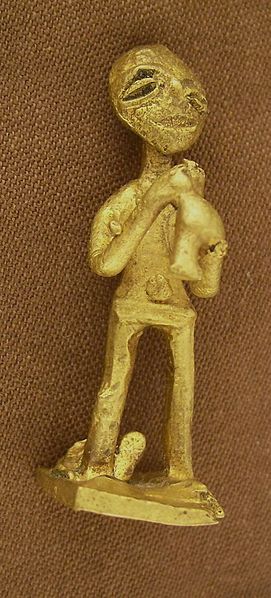Akan goldweights are weights made of brass used as a measuring system by the Akan people of West Africa, particularly for wei and fair-trade arrangements with one another. The status of a man increased significantly if he owned a complete set of weights. Complete small sets of weights were gifts to newly wedded men. This insured that he would be able to enter the merchant trade respectably and successfully.
A selection of Ashanti goldweights
Crocodile goldweight
Geometric goldweight
Figurative goldweight
The Akan people are a Kwa group living primarily in present-day Ghana and in parts of Ivory Coast and Togo in West Africa. The Akan speak dialects within the Central Tano branch of the Potou–Tano subfamily of the Niger–Congo family. Subgroups of the Akan people include: the Agona, Akuapem, Akwamu, Akyem, Anyi, Ashanti, Baoulé, Bono, Chakosi, Fante, Kwahu, Sefwi, Wassa, Ahanta, and Nzema, among others. The Akan subgroups all have cultural attributes in common; most notably the tracing of matrilineal descent in the inheritance of property, and for succession to high political office.
Cast brass weights used to measure precise amounts of gold dust. Weights in this system were developed in the seventeenth century. These weights are from the nineteenth century.
17th Century Akan Terracotta – Metropolitan Museum of Art
Akan Woman.
Akan metalwork from the Brooklyn Museum, New York City, United States.








